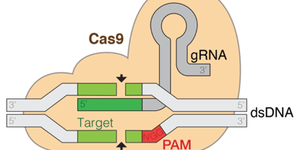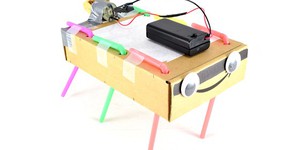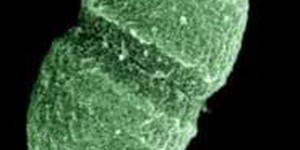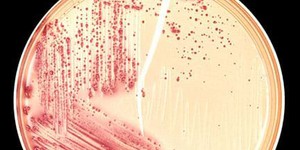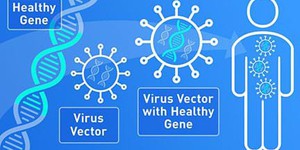Genetic Engineering Lesson Plans (4 results)
Genetic engineering, also called gene editing or genetic modification, is the process of altering an organism's DNA in order to change a trait. This can mean changing a single base pair, adding or deleting a single gene, or changing an even larger strand of DNA. Using genetic engineering, genes from one organism can be added to the genome of a completely different species. It is even possible to experiment with synthesizing and inserting novel genes in the hopes of creating new traits.
Many products and therapies have already been developed using genetic engineering. For example, crops with higher nutritional value, improved taste, or resistance to pests have been engineered by adding genes from one plant species into another. Similarly, expression of a human gene in yeast and bacteria allows pharmaceutical companies to produce insulin to treat diabetic patients. In 2020, scientists had their first successful human trial with CRISPR (a genetic engineering technique), to correct a mutant gene that causes sickle cell anemia, a painful and sometimes deadly blood disease.
There are many different genetic engineering techniques, including molecular cloning and CRISPR, and new techniques are being developed rapidly. Despite this variety, all genetic engineering projects involve carrying out four main steps:
- Identifying the trait to be introduced, eliminated, or otherwise modified.
- Determining what piece of DNA needs to be added or removed in order to get the desired trait modification.
- Making the physical modifications to the organism's DNA.
- Verifying that the trait has been modified as desired.
Learn more about genetic engineering, and even try your hand at it, with these resources.
|
Select a resource
Sort by
|
Lesson Plan
Grade: 6th-12th
5 reviews
In this lesson plan, students will take a closer look at the most recent developments in gene editing. Specifically, they will learn about the CRISPR technology using various interactive simulations and other resources. Based on their gained knowledge, students will create a model of the CRISPR-Cas9 components and create a stop-motion animation video of the molecular mechanism of CRISPR-Cas9.
Remote learning adaptation:
This lesson plan can be conducted remotely. Students can work…
Read more
NGSS Performance Expectations:
Featured
Lesson Plan
Grade: 6th-8th
7 reviews
Junkbots are easy-to-build robots that you can make using a simple circuit and some recyclable materials. In this lesson, your students will learn about engineering design as they compete to build the fastest robot. No previous robotics experience is required!
Read more
NGSS Performance Expectations:
Lesson Plan
Grade: 9th-12th
Students construct paper recombinant plasmids to simulate the methods genetic engineers use to create modified bacteria. They learn what role enzymes, DNA and genes play in the modification of organisms. For the particular model they work on, they isolate a mammal insulin gene and combine it with a bacteria's gene sequence (plasmid DNA) for production of the protein insulin.Engineering Connection
Bacteria are the most common organisms modified by genetic engineers due to…
Read more
NGSS Performance Expectations:
Lesson Plan
Grade: 6th-8th
Students explore adaptations by researching how animals, plants, and bacteria change based on their environment. They grow bacterial colonies in various environments and hypothesize how each environment will affect the cell culture size and color. After a day of pre-growth, the culture is spun down in a centrifuge and the cell pellet is analyzed. Finally, students research bacteria adaptations that allow them to survive in extreme environments then brainstorm how the…
Read more
NGSS Performance Expectations:
Lesson Plan
Grade: 9th-12th
Students become biomedical engineers and create model viruses for use in therapeutic applications, such as gene therapy. In constructing their models, students carefully plan for side effects and modify a virus that can be used to safely to deliver gene therapy. This process involves taking a "wild type" (or unmodified) virus so it can target a specific area of the body.Engineering Connection
Genetic engineering is the artificial manipulation, modification, and…
Read more
NGSS Performance Expectations:
|

